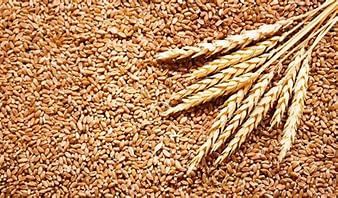UPSC Daily Current Affairs- 14th March 2024 | Current Affairs & Hindu Analysis: Daily, Weekly & Monthly PDF Download
GS-II
Five Eyes Alliance
Subject: International Relations

Why in News?
New Zealand's Deputy PM and Foreign Minister Winston Peters discusses bilateral ties with S. Jaishankar.
Background
- During his visit to India, Mr. Peters highlighted the shared perspectives between India and New Zealand on security challenges in the Indo-Pacific region.
About 'Five Eyes' Alliance
- Established after World War II.
- Member states include Australia, Canada, New Zealand, the United Kingdom, and the United States.
- The term 'Five Eyes' denotes the collaborative efforts of these nations to collect and exchange signals intelligence (SIGINT) to tackle mutual security threats.
Objectives
- Intelligence Sharing: Alliance members work together to share signals intelligence, such as intercepted communications and electronic data, to bolster their collective understanding of global security threats.
- Counterterrorism and National Security: The Five Eyes network concentrates on combating terrorism and addressing national security issues by sharing crucial intelligence and engaging in joint operations.
- Cybersecurity and Cyber Threats: Recognizing the escalating significance of cyber threats, the alliance collaborates to monitor and combat cyber activities conducted by adversarial nations and non-state actors.
- Information and Technology Sharing: Partners within the Five Eyes share knowledge and advancements in intelligence gathering, analysis, and cryptography.
Source: The Hindu
Vocal for Local’ Initiative
Subject: Polity and Governance
Why in News?
NITI Aayog recently launched the 'Vocal for Local' initiative under its Aspirational Blocks Programme.
About ‘Vocal for Local’ Initiative:
- It is an initiative of NITI Aayog under its Aspirational Blocks Programme to encourage a spirit of self-reliance among the people and propel them towards sustainable growth and prosperity.
- As a part of this initiative, local products from 500 aspirational blocks have been mapped and consolidated under the Aakanksha brand.
- Aakanksha is an umbrella brand, which could be supplemented into multiple sub-brands that have the potential to create an international market.
- In order to encourage these products, a dedicated window for the Aspirational Blocks Programme under the brand name Aakanksha has been established on the Government e-Marketplace (GeM) portal.
- The partners will also provide technical and operational support for the facilitation of e-commerce onboarding, establishing linkages, financial/digital literacy, documentation/certification, and skill enhancement, among others.
Key Facts about Government e-Marketplace (GeM):
- It is an online platform for public procurement, launched in 2016 by the Ministry of Commerce and Industry, Government of India.
- It is a one-stop portal to facilitate online procurement of common use Goods & Services required by various Government Departments / Organizations / PSUs.
- The purchases made through GeM by Government users have been authorised and made mandatory by the Ministry of Finance under the General Financial Rules, 2017.
- The platform is owned by GeM SPV (Special Purpose Vehicle), which is a 100% Government-owned, non-profit company under the Ministry of Commerce and Industry.
Key Facts about Aspirational Blocks Programme:
- It is on the lines of the Aspirational District Programme that was launched in 2018 and covers 112 districts across the country.
- This new programme is aimed at improving performance of blocks lagging on various development parameters.
- This will enable holistic development in those areas that require added assistance.
- The programme will initially cover 500 districts across 31 States and Union Territories.
- Over half of these blocks are in six States: Uttar Pradesh (68 blocks), Bihar (61), Madhya Pradesh (42), Jharkhand (34), Odisha (29), and West Bengal (29).
Source: PIB
GS-III
Infrastructure Investment Trust (InvIT)
Subject: Economy

Why in News?
InvITs and REITs have become popular investment options due to a significant increase in fundraising, reaching ₹11,474 crore in 2023. This surge is supported by SEBI regulations and attractive returns offered by these instruments.
Background:
- InvITs and REITs are relatively new concepts in the Indian market but have gained popularity globally for their profitable returns and capital appreciation.
About Infrastructure Investment Trust (InvITs)
- An InvIT is a Collective Investment Scheme akin to a mutual fund, allowing both individual and institutional investors to invest in infrastructure projects and receive a portion of the income as returns.
- It follows a tiered structure where the Sponsor establishes the InvIT, which then invests in eligible infrastructure projects directly or through special purpose vehicles (SPVs).
- Regulated by SEBI under the Infrastructure Investment Trusts Regulations, 2014.
- An InvIT involves four key parties: Trustee, Sponsor(s), Investment Manager, and Project Manager.
- The trustee, certified by SEBI, monitors the performance of the InvIT, while the sponsor(s) are the company promoters who establish the InvIT.
Types of InvITs
- InvITs are categorized based on the types of infrastructure they own or operate, including Energy (e.g., power generation), Transport & Logistics (e.g., highways), Optical Fiber Networks, Social and Commercial Infrastructure, and Water and Sanitation.
- From a funding perspective, InvITs can be Privately-Held or Public-Listed.
Privately-Held InvITs
- These InvITs are not listed on stock exchanges, and their units are privately held by a limited number of individuals or institutions.
Public-Listed InvITs
- Once listed on stock exchanges, they are known as public-listed InvITs, allowing units to be traded on stock exchanges by both retail and institutional investors.
- While SEBI regulations do not mandate the listing of InvITs, public-listed InvITs offer greater liquidity and accessibility to investors.
Source: Hindu Businessline
Food Corporation of India (FCI)
Subject: Economy

Why in News?
The Food Corporation of India (FCI) has recently announced a decrease in wheat stocks, dropping below 100 lakh tonnes for the first time since 2018.
Background:
- The current wheat stock level is at 97 lakh tonnes for this month.
- Despite the decline in wheat stocks, the current supply is adequate to fulfill the National Food Security requirements and exceeds the buffer norm.
About Food Corporation of India (FCI):
- Established in 1965, FCI plays a crucial role in ensuring food security in India.
- FCI's main responsibility is to purchase, store, and distribute food grains nationwide.
- It functions under the Ministry of Consumer Affairs, Food, and Public Distribution.
- During the harvest season, FCI directly procures wheat, rice, and other food grains from farmers to stabilize prices and ensure fair remuneration for farmers.
- FCI maintains a buffer stock of food grains to address emergencies like natural disasters or supply interruptions, serving as a safety net for the nation.
- Food grains are supplied by FCI to states for distribution through the Public Distribution System (PDS), where qualified households obtain subsidized food grains at reasonable rates.
- FCI manages a broad network of storage facilities such as godowns and silos across the country for food grain storage.
- Transporting food grains from surplus-producing states to deficit states is a key function of FCI, ensuring that even remote areas receive food supplies.
- By controlling food grain supply, FCI assists in stabilizing market prices, intervening when prices fluctuate significantly.
- FCI's efforts bolster national food security by guaranteeing a consistent supply of essential goods.
- The economic cost of food grains procured by FCI includes the Minimum Support Price (MSP), bonuses (if any) paid to farmers, along with procurement incidentals and distribution expenses.
Source: Economic Times
Inland Fisheries
Subject: Environment and Ecology

Why in News?
India has recently become the leading contributor to inland capture water fisheries globally, surpassing China.
Background
- The Constitution amendment Bill related to inland fisheries was passed by the Lok Sabha with near-unanimity and later unanimously by the Rajya Sabha.
Definition of Inland Fisheries
- Inland fisheries involve the harvesting, management, and conservation of fish in freshwater bodies like rivers, lakes, reservoirs, and ponds.
- Two main methods are used:
- Capture fisheries: Directly obtaining fish from natural water bodies using fishing gear or nets.
- Culture fisheries: Raising and harvesting fish in controlled environments through breeding or feed management.
Significance and Benefits of Inland Fisheries
- Provides nutritional security by offering protein, omega-3 fatty acids, and Vitamin D.
- Offers economic benefits such as employment, rural infrastructure development, and diverse supply chains.
- Supports healthy ecosystems by controlling invasive species and promoting biodiversity.
- Contributes to ecological balance and sustains aquatic food webs.
- Preserves traditional knowledge systems and cultural heritage.
- Promotes physical and mental well-being through recreational fishing.
Issues and Challenges in Indian Inland Fisheries
- Slow adoption of advanced technologies like innovative hatchery methods and water-efficient aquaculture practices.
- Lack of extension services, standardized prices, and soil/water testing facilities hindering sector development.
- Problems related to credit availability, price discovery mechanisms, and post-harvest losses.
- Lack of cold chain facilities, post-harvest infrastructure, and inadequate mechanization leading to pollution and mismanagement.
- Sustainability concerns due to increasing demand for animal protein, resulting in overexploitation and depletion of fish stocks.
Source: Hindu Businessline
Lyme Disease
Subject: Science and Technology

Why in News?
Lyme disease has recently been in the news due to a reported case in the Ernakulam district of Kerala.
- It is an infectious disease caused by the bacterium Borrelia burgdorferi.
Transmission of Lyme Disease
- The disease is primarily spread through the bite of infected black-legged ticks, commonly known as deer ticks.
- Lyme disease does not spread:
- Between humans
- From pets to humans
- Through air, food, or water
- Lice, mosquitoes, fleas, and flies do not transmit it.
- It is prevalent in wooded and grassy areas globally, especially during warmer months, with higher incidence in North America, Europe, and some parts of Asia.
Symptoms of Lyme Disease
- Early symptoms typically appear 3 to 30 days after a tick bite and include fever, headache, fatigue, and a distinctive "bull's-eye" red rash known as erythema migrans (EM).
- Erythema migrans is a key indicator that aids in early diagnosis and management of the disease.
- If left untreated, Lyme disease can lead to severe complications affecting the joints, heart, and nervous system.
Treatment of Lyme Disease
- The standard treatment involves antibiotics like doxycycline or amoxicillin, especially in the initial stages.
- For advanced stages, intravenous antibiotics may be necessary.
Source: Times of India
Celebrating Pi Day: A Tribute to Mathematics
Subject: Science and Technology

Why in News?
March 14, or 3/14, is celebrated globally as Pi Day, paying homage to the mathematical constant Pi (π).
About Pi Day
- Initiated by: Physicist Larry Shaw of the Exploratorium museum in San Francisco started the tradition in 1988, which has since gained international recognition.
- UNESCO Designation: In 2019, UNESCO designated Pi Day as the International Day of Mathematics, highlighting its significance in promoting mathematical awareness.
What is Pi?
- Mathematical Constant: Pi (π) represents the ratio of a circle’s circumference to its diameter, with a value of approximately 3.14.
- Irrational Number: Pi is an irrational number, with a decimal representation that neither terminates nor repeats.
- Ancient Approximations: Ancient civilizations, including Babylonians and Egyptians, approximated Pi using geometric methods, laying the foundation for its calculation.
- Symbol of Beauty: Pi’s infinite and non-repeating decimal digits evoke a sense of wonder and appreciation for the intricacies of mathematics.
Evolution of Pi Calculation
- Archimedes’ Method: Greek polymath Archimedes devised a method to approximate Pi using inscribed and circumscribed polygons, pioneering early calculations.
- Newton’s Contribution: Isaac Newton revolutionized Pi calculation using calculus, significantly simplifying the process and enabling rapid advancements.
- Modern Computing: With the aid of modern computers, mathematicians have calculated Pi to trillions of decimal places, facilitating precise scientific calculations.
Practical Significance of Pi
- Architectural and Engineering Applications: Pi plays a crucial role in designing structures, shaping engineering solutions, and facilitating accurate measurements.
- Understanding the Universe: Pi’s significance extends to diverse fields, from space exploration to molecular biology, underscoring its universal applicability.
- Intrinsic Value: Despite its vast decimal expansion, Pi holds intrinsic value as a symbol of mathematical beauty and infinity, inspiring exploration and discovery.
Source: The Hindu
|
38 videos|5293 docs|1118 tests
|
FAQs on UPSC Daily Current Affairs- 14th March 2024 - Current Affairs & Hindu Analysis: Daily, Weekly & Monthly
| 1. What is the significance of the Five Eyes Alliance? |  |
| 2. What is the 'Vocal for Local' Initiative mentioned in the article? |  |
| 3. What is an Infrastructure Investment Trust (InvIT)? |  |
| 4. What is the role of the Food Corporation of India (FCI)? |  |
| 5. What is Lyme Disease mentioned in the article? |  |
















